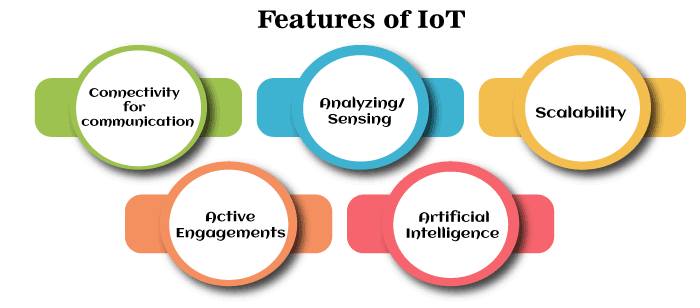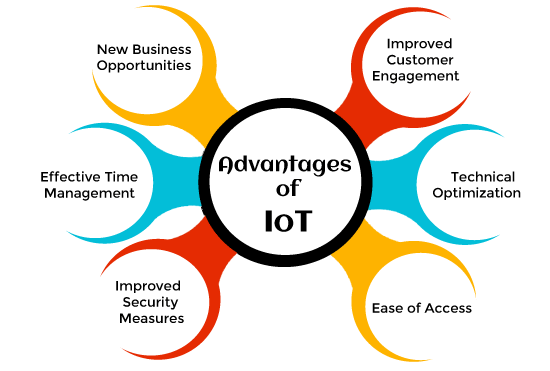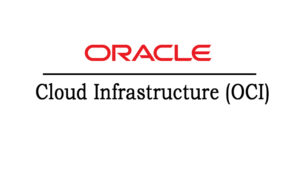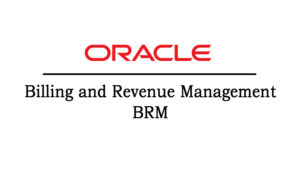IOT (Internet Of Things) Certification Training
One of the top providers of online IT training worldwide is VISWA Online Trainings. To assist beginners and working professionals in achieving their career objectives and taking advantage of our best services, We provide a wide range of courses and online training.
Learners : 1080
Duration : 30 Days
About Course
Our IOT (Internet of Things) system refers to physically connected objects that may connect and exchange data with other objects online. These objects are reachable through software, sensors, and other technologies. The Internet of Things now includes everything, from commonplace items to industrial gear. The availability of ubiquitous wireless networks, the ease of creating affordable chips, sensors, and hardware, and the ability to communicate seamlessly have made connection conceivable.
IOT (Internet Of Things) Training Course Syllabus
✔ Introduction to the Internet of Things
✔ Concepts and Definitions of The Internet of Things
✔ History of Internet Of Things
✔ Applications
✔ IoT standards
✔ Requirements
✔ Functionalists and structure
✔ Internet Of Things enabling technologies
✔ Internet Of Things Architecture
✔ Major component of Internet Of Things
✔ Hardware, sensors, Systems-on-a-Chip, firmware, device drivers, application software, connectivity, cloud, and security
✔ Role of wired and wireless communication
✔ Internet Of Things communication and networking protocols
✔ Internet Of Things services and applications
✔ Big data and analytics
✔ Security
✔ Cloud Computing and the Internet of Things
✔ Semantic Web 3.0 Standard for M2M and IoT
✔ Internet Of Things Platforms
✔ Challenges of adapting the concepts
✔ IOT Physical Design, Logical Design, and Characteristics of IoT
✔ Introduction to Sensors and Actuators
✔ Wireless 101
✔ RF 101
✔ ZigBee PRO, ZigBee 3.0 and ZigBee IP
✔ 6LowPAN
✔ RFID
✔ Bluetooth LE or Bluetooth Smart Technology
✔ Z-Wave
✔ Home Automation (HA) Profile
✔ Smart Energy (SE) Profile
✔ Health Care
✔ IEEE 802.15.4, IEEE 802.15.4e, 802.11ah
✔ 802.11ah, Wi-Fi HaLow
✔ Relay Access Point (AP)
✔ Grouping of stations
✔ Target Wake Time (TWT)
✔ Speed Frame Exchange
✔ Sectorization
✔ GSM, CDMA, GPRS,3G, LTE, small cells, SATCOM
✔ Sensors and sensor networks
✔ Serial communication
✔ Power consumption and optimization
✔ MIPI, M-PHY, UniPro, SPMI, BIF, SuperSpeed USB Inter-Chip (SSIC), Mobile PCIe (M-PCIe) and SPI
✔ Wired connectivity
✔ IPv4/IPv6
✔ Ethernet/GigE
✔ Real-time systems and embedded software
✔ Big data
✔ Analytics
✔ Cloud computing and storage
✔ Augmented Reality
✔ IoT Communication Models, IOT Communication APIs
✔ Platforms
✔ Mobile integration
✔ Deployment
✔ Data Visualization
✔ Convergence with Social Networks
✔ Value chain and Business models
✔ User-centric cloud-based services
✔ Analytical Hierarchy Process for technology selection
✔ End-to-end security
✔ Integration with IT systems
✔ Cost/benefit constraints
✔ End-to-end compatibility
✔ Application Architecture
✔ Lifecycle solution management
✔ Real-time response and delay
✔ Raspberry pi – an IoT Device, Installation and Pin Description.
✔ Basic Python Programming Commands for starting raspberry pi desktop.
✔ Remote access of raspberry pi on Laptop via VNC Server.
✔ Basic GPIO Commands for LED Blink, LED Control with a button.
✔ PWM Application to control LED Brightness using GPIO Commands.
✔ Interfacing of sensors with Raspberry pi, ex Temperature & Humidity Sensor.
| Live Instructor Based Training With Software |
| Lifetime access and 24×7 support |
| Certification Oriented content |
| Hands-On complete Real-time training |
| Get a certificate on course completion |
| Flexible Schedules |
| Live Recorded Videos Access |
| Study Material Provided |
IOT (Internet Of Things) Training - Upcoming Batches
Coming Soon
AM IST
Coming Soon
AM IST
Coming Soon
PM IST
Coming Soon
AM IST
Don't find suitable time ?
CHOOSE YOUR OWN COMFORTABLE LEARNING EXPERIENCE
Live Virtual Training
-
Schedule your sessions at your comfortable timings.
-
Instructor-led training, Real-time projects
-
Certification Guidance.
Self-Paced Learning
-
Complete set of live-online training sessions recorded videos.
-
Learn technology at your own pace.
-
Get access for lifetime.
Corporate Training
-
Learn As A Full Day Schedule With Discussions, Exercises,
-
Practical Use Cases
-
Design Your Own Syllabus Based
IOT (Internet Of Things) Training FAQ'S
IoT, or the “Internet of Things,” is an acronym. The phrase “Internet Of Things” or “the Internet of Things” was originally used in 1999 by Kevin Ashton. A network of physical objects known as “things” that are equipped with software, electronics, networks, and sensors enables these things to exchange data over a WIFI network without the need for human contact. The embedded systems found in Internet of Things devices, such as software, electronics, networks, and sensors, enable them to transmit data across a network, respond to commands from a distance, or act on data they have gathered.
Wearables, implants, smartphones, automobiles, machinery, appliances, computer systems, and other items are some examples of the Internet of Things gadgets and items that are currently on the market.

Connectivity for communication: Connectivity is the most important part of IoT. The Internet of Things consists of networks, data hubs, sensors, etc., for connectivity and cannot work properly without seamless communication among the interrelated components or objects. There are many ways to connect IoT devices such as radio waves, Bluetooth, WiFi, Li-Fi, etc.
Analyzing/Sensing: Analyzing or sensing comes into play when all the relevant components or objects are connected. This step is used to analyze collected data and use it to build effective business intelligence. It is very important to extract knowledge from the collected data. For example, the collected data by sensor won’t be of much use unless it is interpreted properly.
Scalability: Scalability is used to handle the massive data generated by the sensors. Each day, more and more elements connect to the IoT zone, generating massive data. So, scalability is a must to handle the immense data correctly.
Active Engagements: IoT uses multiple products, cross-platform technologies, and services to work together on an active engagement basis. It uses blockchain cloud computing to enable active engagements among IoT components in general.
Artificial Intelligence: Artificial Intelligence is an essential part of IoT to make things such as mobile phones, wearables, vehicles, household devices, etc. to make them working smart. For this purpose, it uses data collection, artificial intelligence algorithms, and networked technologies. For example, if you are using an IoT-based coffee machine, it will order coffee beans from the retailer of your choice if the coffee beans will end.
For use in our daily lives, IoT can create smart devices. IoT-enabled gadgets can exhibit a higher level of automation than previous models. IoT can build a larger network that allows various gadgets to freely communicate with one another and improve our daily life.
IoT significantly improves our daily lives. For instance, IoT-enabled sensor-driven household equipment like refrigerators automatically shut off when not in use, and virtual assistants can control most of our devices, including the lights we use in our rooms, the TV we watch, the air conditioner we use, the music we like to listen to, etc.
IoT is not just about our technology. With the use of IoT, even our wearables have advanced significantly.
- Consumer devices
- Healthcare
- Agriculture
- Manufacturing
- Automation and public transportation
- Utilities and energy
- Smart cities and smart homes
- Environmental benefits etc.

By learning through VISWA Online Trainings, advance in your job.
Reviews
 Lavanya Posina2024-09-30To get the SAP S4HANA MM training is really worth from VISWA Technologies. I would like to thank you for providing an excellent training.
Lavanya Posina2024-09-30To get the SAP S4HANA MM training is really worth from VISWA Technologies. I would like to thank you for providing an excellent training. Krishna Grandhi2024-09-19I attended PBCS course. Trainer has good knowledge and his explanation is easy to understand. The support team is also supportive during the training period. Overall experience is good.
Krishna Grandhi2024-09-19I attended PBCS course. Trainer has good knowledge and his explanation is easy to understand. The support team is also supportive during the training period. Overall experience is good. Siddhartha Mothukuri2024-09-10Learnt SAP EWM and it has been a really good experience with VISWA Online Trainings and trainer has been excellent in terms of his understanding in business as well as SAP. Thank you
Siddhartha Mothukuri2024-09-10Learnt SAP EWM and it has been a really good experience with VISWA Online Trainings and trainer has been excellent in terms of his understanding in business as well as SAP. Thank you Lakshmiprasanna Annem2024-08-01Thanks chaitanya arrange for sap bw on Hana job support. I will recommend definitely anyone.
Lakshmiprasanna Annem2024-08-01Thanks chaitanya arrange for sap bw on Hana job support. I will recommend definitely anyone. VINOD reddy2024-07-23Amazing Oracle Transportation Management (OTM) training! Definitely recommend.
VINOD reddy2024-07-23Amazing Oracle Transportation Management (OTM) training! Definitely recommend. Arvind P2024-06-28Good institute. Very responsible. As a trainer I got a good experience with them
Arvind P2024-06-28Good institute. Very responsible. As a trainer I got a good experience with them srinivasulu p2024-05-14I have recently enrolled azure cloud security training. There was lots of interaction sessions. It was best online learning platform.
srinivasulu p2024-05-14I have recently enrolled azure cloud security training. There was lots of interaction sessions. It was best online learning platform. Mahendra Reddy2024-05-14I would definitely recommend it anyone looking for generative AI course. This is friendly course thanks phani kumar
Mahendra Reddy2024-05-14I would definitely recommend it anyone looking for generative AI course. This is friendly course thanks phani kumar




